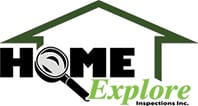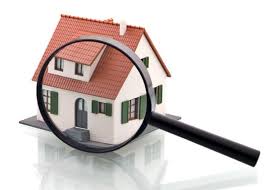 |
|
|||||||
The Licensed Home Inspector: Ontario's New Standard |
| Posted: September 20, 2016 |
| By: Ryan Bowering |
The Licensed Home Inspector: Ontario's New Standard The Canadian Standards Association (CSA) has developed a new standard, CSA-A770-16 Home Inspection, due to the inconsistency in home inspection practices in the province of Ontario. The standard establishes the key systems and components to be inspected, providing minimum requirements for a proper inspection, and outlines general inspection procedures and minimum reporting requirements (conditions and deficiencies) that inspectors will need to follow – and requiring all home inspectors to be licensed. It is expected that these new home inspection standards will come into effect soon.
The main goals of this new standard are to protect consumers and create more of a level playing field for inspectors. This being the first edition, there could be changes after the test drive this fall, once it has been determined how effective the standards have actually been in accomplishing the goals. It does not address the qualification, competency, or certification of the individual conducting the home inspection. To me, if you’re going to go to the trouble of creating a standard for inspection, why not create a standard for the inspector while you’re at it?! There are some exclusions – a list of activities not required for a home inspection. These will include: estimating costs or providing quotes for repairs and upgrades, predicting the probability of failure or remaining service life of any system or component (furnace, AC, water heater, etc.), advising on the purchase of the home, identifying hidden infestations (termites, cockroaches, rodents, etc.) or hazardous elements (radon, mould, asbestos, air toxins, etc. – expert testing required) or underground components (buried oil tanks, cisterns, old plumbing, drains, etc.), commenting on water supply and purity, and septic or sewage systems. The inspector will be expected to provide all equipment and tools required to conduct a home inspection. This might seem ludicrous to some of you – that they would need to include this in the standard – but a realtor recently told me that during the inspection, the “inspector” began by asking if he could borrow a ladder, a flash light, a measuring tape, and then a camera! The client told him to go home….. But I think the biggest inconsistency with home inspectors lies in the reporting of the defects and condition of the home in question. It will soon be a requirement to state a description of the significant issues deemed to need attention, include the possible implications (what could/will happen if the issues are not addressed), note the general weather conditions at the time of the inspection, and provide the report in a specified time frame in accordance to the inspection agreement, which will need to be provided to the buyer before the inspection for consideration. Supporting images will be required – photos and/or illustrations of any defects noted. If the Licensed Home Inspector (LHI) does not fulfill the minimum obligations set out by the new standard, consumers will have the recourse of reporting the inspector. That inspector will then have to account for his lack of inspecting ability or report practices, and appear before a committee to explain why he/she should be allowed to continue to practice this profession. Time will tell if this actually amounts to anything. Here is a somewhat exhaustive list of the required systems and components that will be inspected and included in the report: EXTERIOR
STRUCTURE
BUILDING ENVELOPE
PLUMBING
HVAC (Heating, Ventilation & Cooling)
ELECTRICAL
LIFE SAFETY SYSTEMS
FIRE SEPARATION & EGRESS
INTERIOR
While I examine most of the items included under the headings above, there are some additions. It takes me an average of six to seven hours for each home inspection, including report preparation. I like to do more of a prescriptive style of report writing – stating the current condition, the limitations and implications, as well as some recommendations about what you can do and who you can call to remedy the situation. With the additional requirements, it could add another hour onto the total time I need for each inspection and report. Some inspectors are only spending two to three hours per inspection, and this way they can complete three inspections in a day. Some actually do four! With the additional amount of time that will be needed to incorporate all of the items listed, and the perceived increase in liability (potentially increasing the insurance rates for inspectors), be prepared for the price of home inspections to rise! Condos and pre-fab homes may/will bring special considerations for reporting. I suspect that most inspectors will just choose to no longer inspect these types of housing – because of the extra knowledge, research, and liability that could be associated with these inspections. Likely we’ll start to see inspectors who make this their specialty, and will do almost nothing else. Well, that’s it for my trilogy on home inspectors, inspection practices, and the CSA standard. Watch your local or national news for updates regarding the introduction of the new standard. In the coming months, I’ll talk more about issues that people often overlook when purchasing a home, things you can do to improve your home (i.e. correcting moisture issues in the basement and crawlspace), and seasonal maintenance tips – especially of interest to first-time homebuyers. Autumn officially arrives in two days, so as the leaves start to fall, remember to keep your eavestroughs/gutters free of debris, in preparation of the rain and snow to come! |
| Posted under Licensed Home Inspector |
| Go back to the Blog Archive |
Contact Us |
Serving London, Strathroy, Woodstock, Stratford, St. Thomas and most locations in SW Ontario.
Business Websites by We Think Solutions© 2024 | Home Explore Inspections Inc |


